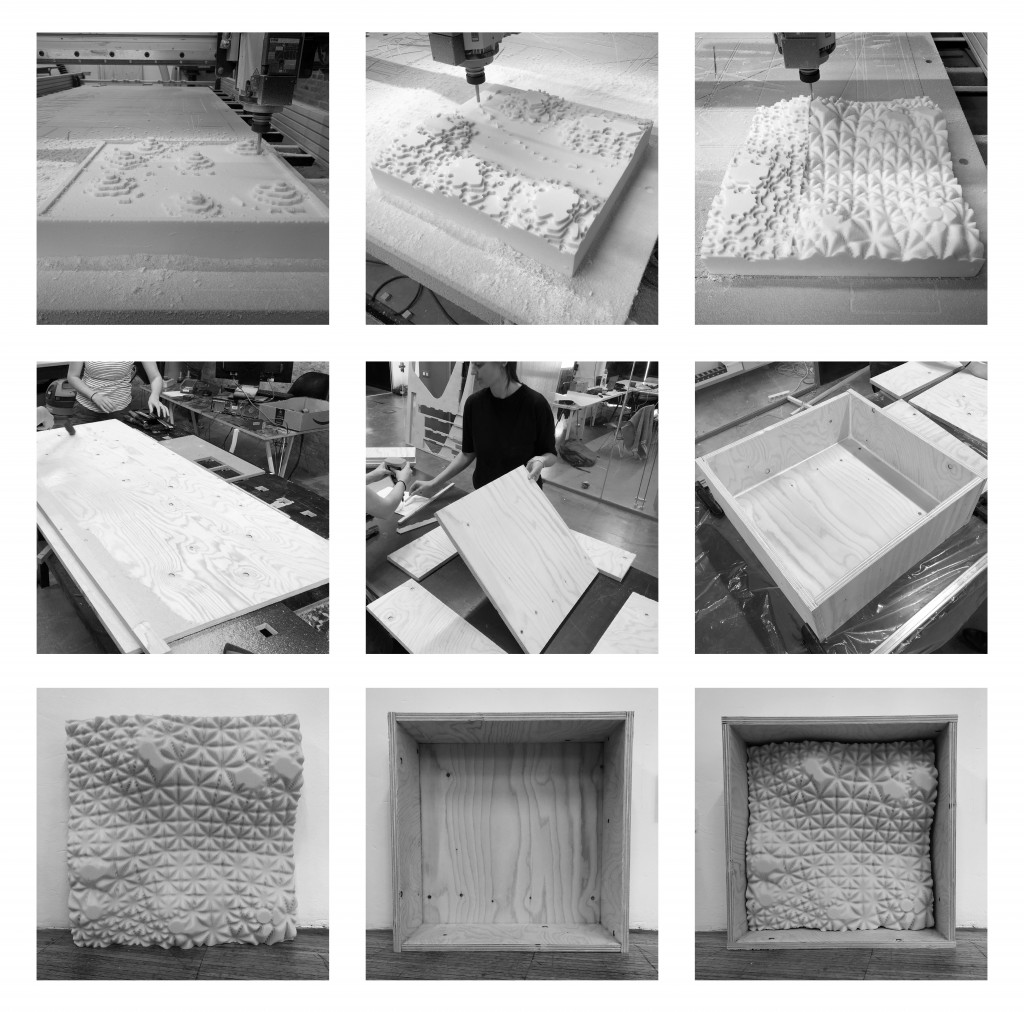Digital Bio Systems // Blooming Hub
A community garden inspired by edible flowers.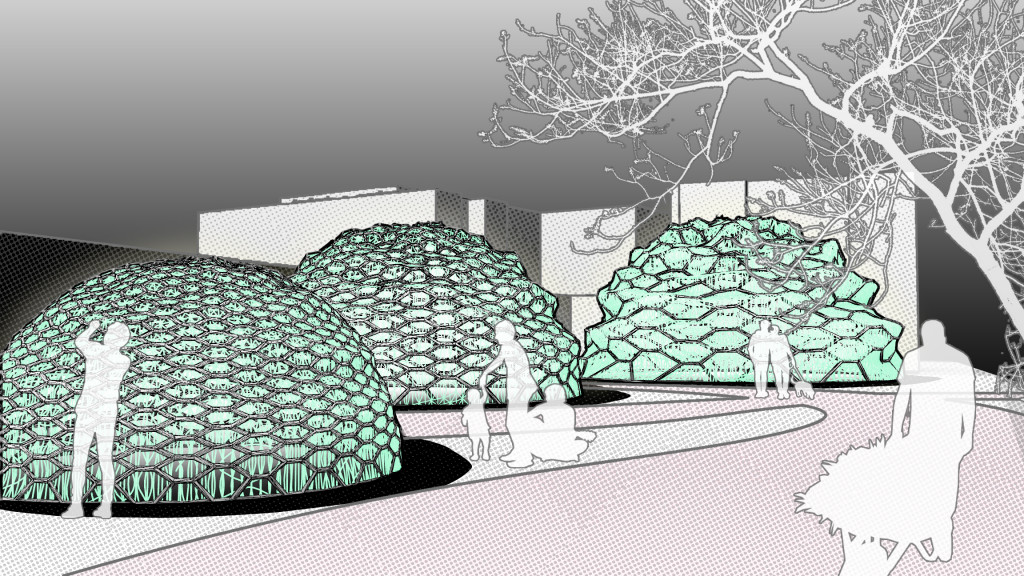
The Objective:
To design a 500mm by 500mm panel to grow plants and to extract the roots to create a membrane. In addition, create a closed loop cycle that indicates the concept and how it can be integrated into society.
Inspiration:
Three projects inspired our project. The first, Mediamatic, which two of our group members had visited while in the Netherlands. It is a place of innovation also exploring the closed loop system. This is where they also got to try edible flowers. The second is Diana Scherer, an artist who explores using grass roots to create textiles. Finally, the Eden project, a winter garden that is covered by a membrane.

Edible Flowers- Concept and Intentions:
The concept of the project began with edible flowers and a community garden in the heart of Poblenou. This further developed into edible flowers that provide more than just the flower. For example, fruits and vegetables, seed and pollen for pollination.
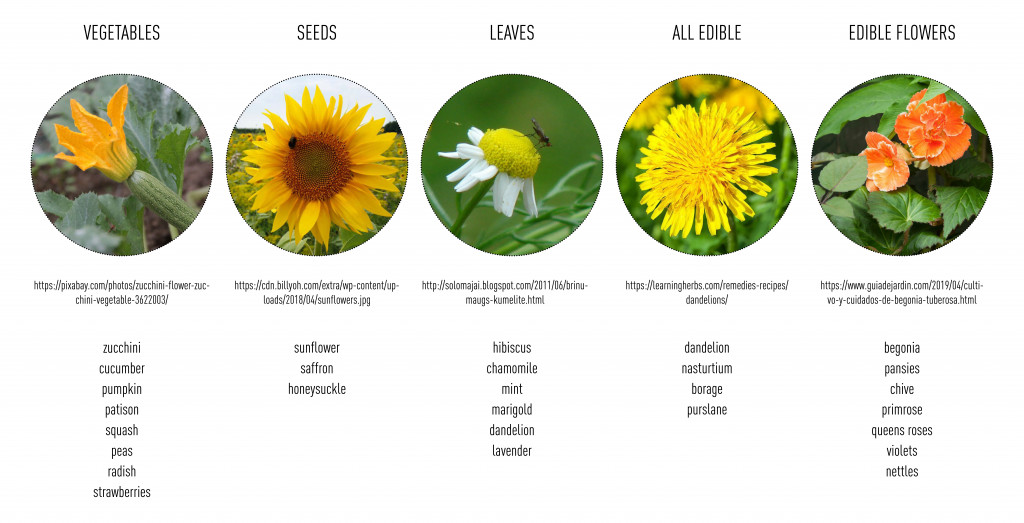
Below is the cycle that could be achieved as a result of the project. All the elements of the flower can be used. Not only are we creating a space for humans, but also for insect and birds, creating a whole new ecosystem.

The Site:
As many of us live in the Poblenou Area and this is were IAAC is located, we wanted to look at a site within the Poblenou area. One of the major explorations in Barcelona is the idea of the Superblock. While some believe it has been successful, there are others that believe the opposite. So we ask ourselves, how can we enhance the superblock and get the community involved?
Therefore, our site is located in an empty plot of land on the edge of the superblock. This is currently an undeveloped space that could be perfect for a community garden due to the level of sunlight.
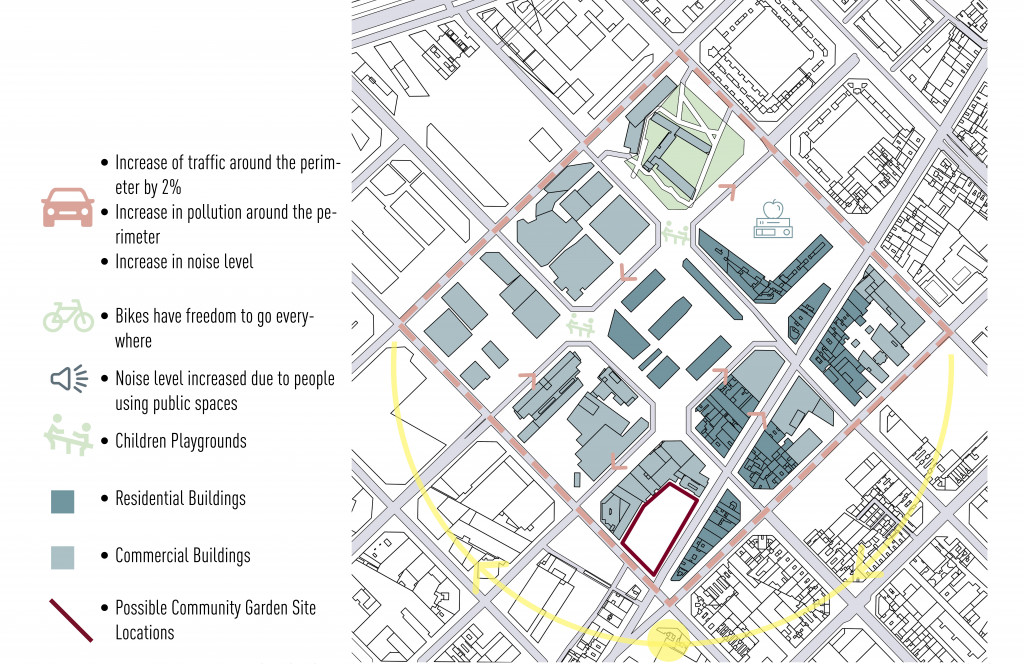
Panel Concept:
With root explorations primarily taking place with 2D forms, we decided to look into the possibility of creating a 3D form that the roots could follow. The pattern is inspired by one of our edible flowers, the sunflower. The head of the sunflower has a specific pattern which we translated into a grasshopper script. The script is in two parts. The first, creates the 2D pattern which is then projected onto a surface.

The code is set up so that the vertexes of the hills can change location. Upon further development this could be explored with root densities.

There are two main panels. The first is the root membrane, and the second, a plant box to encourage wildlife to come into the city. These panels would form the structure to be housed within the community garden.
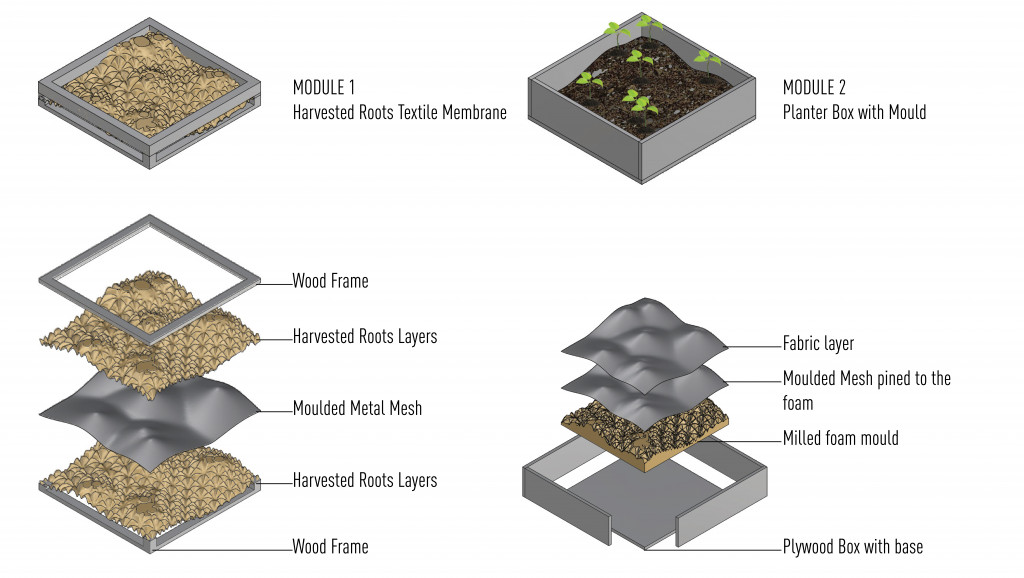
Fabrication Process:
Our fabrication process began with CNC Milling the foam moulds. (In reality this could be a biodegradable foam or wood.) Next, the box is built to house the plants, and the various meshes are placed on top of the foam. Most importantly, is pinning the meshes to the foam.
Planting Process:
The planting process began with seeds. We planted a variety of different plants with edible flowers. These include, courgettes, cucumber, strawberries, Pansies, Forget Me Nots, and Basil. Each one creates different root types, the courgettes producing the largest and longest roots. Once the plants were strong enough we transplanted them into the box and onto the moulds.
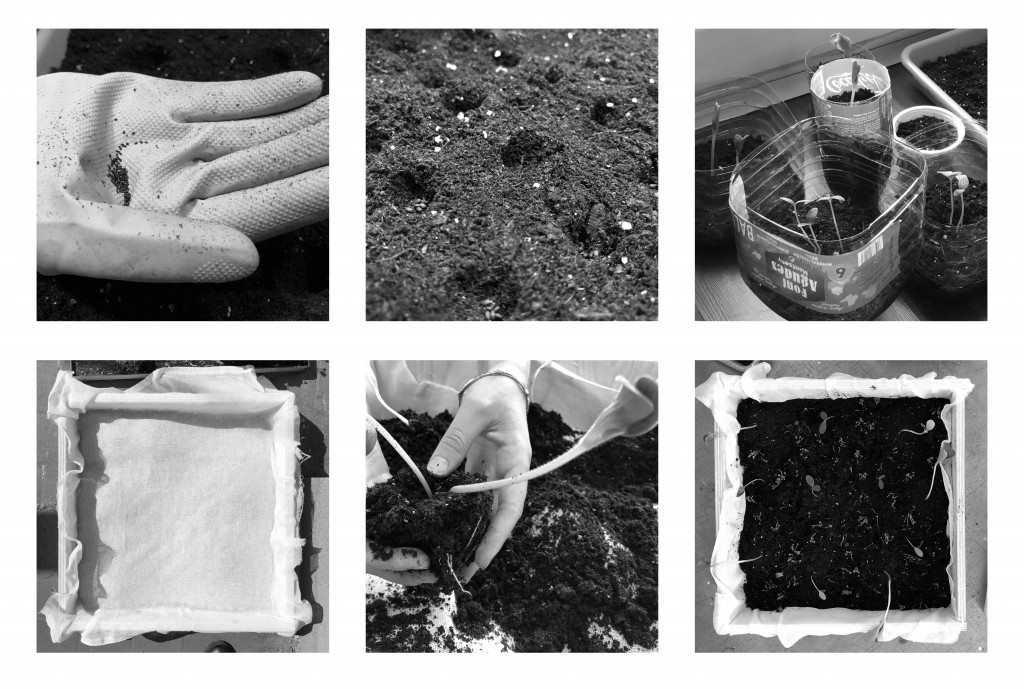
The Vision:
With the concept of flowers, our intention was to design something lightweight that could be used all through the year. By designing domes of various heights and sizes, we can encourage all members of the community to get involved. Furthermore, the panels could be designed in all shapes and sizes and would be placed within the frame of the domes. Inside plants for the panels could be grown especially during the colder months.
Below is a simple plan of how we could populate the site with the community garden. The domes could be connected by a network of paths that run through the garden. People can then harvest the fruits and vegetables, either using them for themselves or to be sold to the local community for funds that can go back into the community garden.

Results:
Finally, after 1 Week of growth here are our results! In conclusion, we believe the 3D panel creates new research and possibilities for the future. For example, looking at how to maintain the form and exploring root densities in relation to light.
 Blooming Hub is a project developed at IAAC, as part of the
Blooming Hub is a project developed at IAAC, as part of the
Digital Bio Systems Seminar, for Master of Advanced Architecture.
Students: Juhi Bafna, Fiona Demeur, Kristine Kuprijanova, Surayyn Uthaya Selvan
Faculty: Chiara Farinea – Mohamad El Atab
Teaching assistants: Federica Ciccone – Nusrat Tabassum
